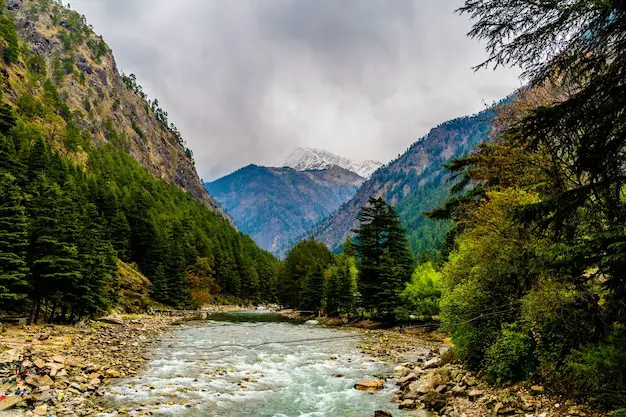Exploring the Diversity of Natural Environments and Environmental Psychology: From Forests to Oceans



Page Contents
Tapestry of Landscapes, Ecosystems, and Biodiversity
Nature’s vast canvas paints a diverse panorama of natural environments across the globe, each offering a unique tapestry of landscapes, ecosystems, and biodiversity. From the towering mountains to the expansive deserts, the lush rainforests to the dynamic oceans, the variety of natural environments is awe-inspiring. In this article, we embark on a journey to explore the different types of natural environments that shape the Earth’s surface, understanding their distinctive characteristics, ecological importance, and the wealth of life they support.



Ensuring Ecosystem Resilience
Plants, waters, mountains, and animals play integral roles in maintaining the delicate balance of Earth’s ecosystems. Plants, through photosynthesis, produce oxygen and provide a foundation for the food chain, supporting various animal species. Waters, including rivers, lakes, and oceans, not only serve as habitats for countless organisms but also regulate global climate patterns. Mountains contribute to biodiversity by creating unique habitats for specialized flora and fauna. Animals, acting as pollinators and seed dispersers, aid in the reproduction of plants, ensuring ecosystem resilience. The interconnectedness of these elements forms a complex web of life, highlighting the importance of preserving and respecting each component for the well-being of our planet.



Environmental Psychology
The intricate relationship between ecosystems and environmental psychology underscores the profound impact of natural environments on human well-being. Exposure to diverse ecosystems, such as forests, rivers, and mountains, has been linked to positive psychological outcomes, including reduced stress and improved mental health. The presence of plants and animals in these environments contributes to a sense of connection to nature, fostering emotional well-being. Additionally, the preservation of ecosystems is crucial for mitigating the negative psychological effects of environmental degradation, as disruptions in natural systems can lead to increased stress, anxiety, and a diminished sense of place. Recognizing and understanding this interconnectedness emphasizes the importance of maintaining healthy ecosystems for both ecological sustainability and the promotion of positive psychological experiences.





Exploring the Diversity of Natural Environments: From Forests to Oceans
- Terrestrial Environments:a. Forests: Dense and vibrant, forests cover vast expanses of the Earth. From the towering redwoods of North America to the Amazon rainforest, these ecosystems play a crucial role in carbon sequestration, biodiversity, and providing habitat for countless species.b. Deserts: The arid landscapes of deserts, such as the Sahara or the Mojave, are characterized by low precipitation and extreme temperatures. Despite harsh conditions, deserts are home to specially adapted flora and fauna, showcasing the resilience of life.c. Grasslands: Stretching across continents, grasslands like the African savannas or the American prairies are dominated by grasses and support diverse herbivore populations. These ecosystems are essential for grazing animals and often experience seasonal changes.d. Mountains: From the majestic Himalayas to the Andes, mountainous environments provide unique habitats characterized by varied elevations and extreme climates. They contribute to global biodiversity, serve as water sources, and are cultural and recreational landscapes.
- Aquatic Environments:a. Freshwater Ecosystems: Rivers, lakes, and freshwater wetlands are vital components of the Earth’s hydrological cycle. They support diverse aquatic life, provide drinking water, and are critical for various ecosystems and human societies.b. Oceans: Covering more than two-thirds of the Earth’s surface, oceans are the largest and most diverse ecosystems. From the vibrant coral reefs to the deep abyssal plains, oceans harbor an immense array of marine life and play a crucial role in regulating the planet’s climate.c. Coastal Environments: Where land meets sea, coastal environments include estuaries, mangroves, and intertidal zones. These areas serve as nurseries for marine life, protect coastlines from erosion, and provide habitat for a multitude of species.d. Polar Regions: The Arctic and Antarctic polar regions are characterized by extreme cold and unique adaptations. Polar environments are home to iconic species like polar bears and penguins and are sentinel regions for climate change impacts.
- Urban Environments:a. Urban Green Spaces: Even within bustling cities, urban green spaces like parks and gardens provide pockets of nature. These areas contribute to residents’ well-being, support local biodiversity, and mitigate the urban heat island effect.b. Rural and Agricultural Landscapes: Agricultural areas, farmlands, and rural landscapes are shaped by human activities. While supporting food production, these environments also interact with natural ecosystems, influencing biodiversity and land use.
Conclusion
The Earth’s diverse natural environments form the foundation of life on our planet. From the towering peaks to the deep ocean abyss, each type of natural environment contributes to the intricate web of life and sustains the delicate balance of ecosystems. Recognizing and appreciating the variety of natural environments is crucial for fostering a sense of stewardship and inspiring efforts to preserve and protect the planet’s precious biodiversity for future generations.







